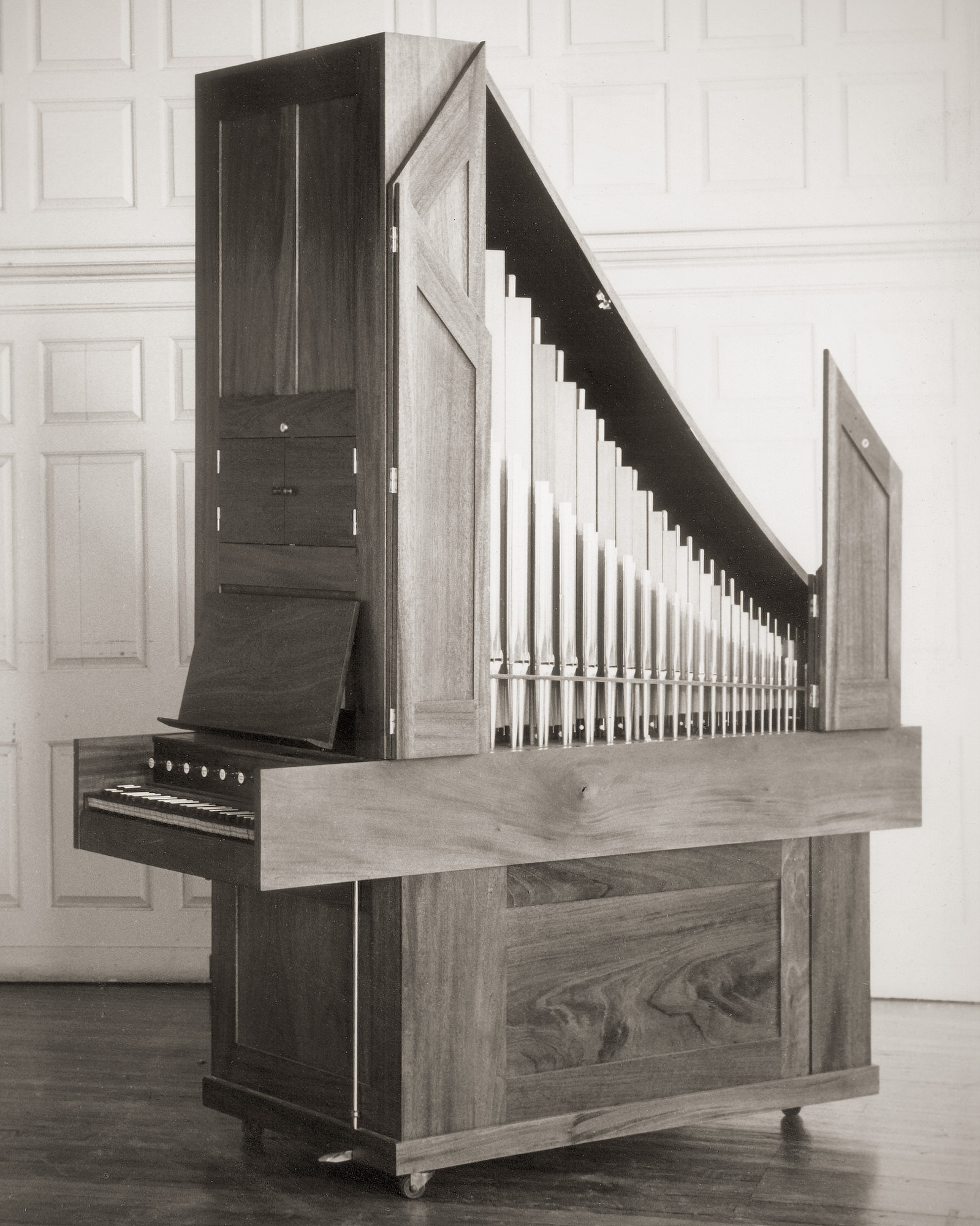Opus 64
Private Residence
Malden, MA
View Site
Built in 1970 to be used in Renaissance and Baroque ensembles both as a solo and continuo instrument, Opus 64 was the first of three similar positive organs built by the Fisk shop employing Charles Fisk’s design for a keyboard at the end of the windchest. The unusual location of the keyboard created the most direct action possible and positioned the performer with a side view to the audience or to the other members of an ensemble. Of one of these instruments Charles Fisk wrote:
The Conservatory’s new chamber organ, while conceived as an all-purpose chamber instrument, with continuo playing as a specialty, draws its inspiration from the work of John Snetzler, the eighteenth century Swiss who spent most of his professional life in England… This organ employs extensively the pipe scales and forms found in the 1761 Snetzler presently in the possession of the Smithsonian Institution. The voicing techniques also follow Snetzler’s example, as does the flexible winding of the instrument. Like the Smithsonian Snetzler, the organ has its stops divide just below middle C, making possible a difference of sonority between the left and right hands, much as if the organ possessed two manuals. Snetzler’s machine stop pedal is also included; when depressed this device disconnects the upperwork, making echo effects possible, again almost as though the instrument had two manuals instead of one.
The Yale School of Music has Opus 66 and the New England Conservatory Opus 66A.
Gedackt Bass 8′
Gedackt Treble 8′
Rohrflöte Bass 4′
Rohrflöte Treble 4′
Principal Bass 2′ *
Principal Treble 2′ *
Regal Bass 8′ *
Regal Treble 8′ *
* hitch down disconnects Regal & Principal
Stops divided at B0-c1
Compass: 56 notes CC-g3.

Opus 64
Private Residence
Malden, MA
View Site:
Built in 1970 to be used in Renaissance and Baroque ensembles both as a solo and continuo instrument, Opus 64 was the first of three similar positive organs built by the Fisk shop employing Charles Fisk’s design for a keyboard at the end of the windchest. The unusual location of the keyboard created the most direct action possible and positioned the performer with a side view to the audience or to the other members of an ensemble. Of one of these instruments Charles Fisk wrote:
The Conservatory’s new chamber organ, while conceived as an all-purpose chamber instrument, with continuo playing as a specialty, draws its inspiration from the work of John Snetzler, the eighteenth century Swiss who spent most of his professional life in England… This organ employs extensively the pipe scales and forms found in the 1761 Snetzler presently in the possession of the Smithsonian Institution. The voicing techniques also follow Snetzler’s example, as does the flexible winding of the instrument. Like the Smithsonian Snetzler, the organ has its stops divide just below middle C, making possible a difference of sonority between the left and right hands, much as if the organ possessed two manuals. Snetzler’s machine stop pedal is also included; when depressed this device disconnects the upperwork, making echo effects possible, again almost as though the instrument had two manuals instead of one.
The Yale School of Music has Opus 66 and the New England Conservatory Opus 66A.
Gedackt Bass 8′
Gedackt Treble 8′
Rohrflöte Bass 4′
Rohrflöte Treble 4′
Principal Bass 2′ *
Principal Treble 2′ *
Regal Bass 8′ *
Regal Treble 8′ *
* hitch down disconnects Regal & Principal
Couplers:
Accessories:
Stops divided at B0-c1
Compass: 56 notes CC-g3.
